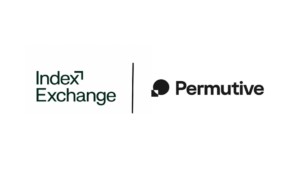Four leading digital marketers came together at our Maison NDA venue in Cannes this June to discuss the state of programmatic in 2024, its challenges and opportunities and, yes, how AI might also impact it in the future.
“Programmatic is the stroppy teenager. Moody and temperamental sometimes. It doesn’t quite know what it wants to do when it grows up,” suggests Phil Acton, Country Manager UK, AdForm.
Elizabeth Brennan, General Manager Advertising, Permutive gives Programmatic a little more credit: “It’s early twenties. It’s had some bad jobs, earned a bit of money and not sure what it’s doing with its life. It’s a bit more grown up than we give it credit for.”
Grown up, but a way to go seems to be the consensus, according to the panel. The foundations are there, now the job is buffing off its rough edges. In this case, a lot seems to rest on sorting out the supply chain at one end, and making sure metrics are fit for purpose on the other.
While Acton notes that cleaning up supply and curation and attention metrics all being part and parcel of “advertising cleaning up its act a little bit”, there is still a tendency to cling to less justifiable practices: “We need to stop pretending we’re optimising to viewable metrics when we’re not.”
Brennan acknowledges that helping advertising to clean up its act also falls at the feet of the advertisers, who also don’t help themselves. How they measure their own brand performance still lacks standardisation which, in turn, makes it very difficult to have forceful conversations around attribution. “It depends on the advertiser’s source of truth. If they have a very different approach to measurement, if their source of truth is their chosen attribution model or what’s reported in the DSP, that’s when the conversation becomes difficult.”
How brands measure can give an indication as to their perception of the programmatic landscape. “There are brands who are focused on delivering numbers, and those who are more focused on business outcomes rather than media metrics. Those brands still have some concerns around transparency, quality and safety,” suggests Celine Saturnino, CEO at Total Media.
Mike Wong, Head of North America Sales at Bloomberg Media insists – certainly from his corner of the publishing world – there is definitely movement in the right direction. “We’ve come a long way. A publisher wouldn’t even tell you where ads ran, what the percentages were, which ad units were optimised. Against that low bar there’s a lot of transparency now, and for good reason.”
He adds that his team recognises that Bloomberg’s advertisers have pressures, “they’re being held accountable. The stakes are high for them. They’re making a play on us as a single publisher so we take pride in communication.”
Reputation does go a long way and things such as quality publishers and quality journalism still hold sway, even in the programmatic world. Acton suggests: “[Consumers] still want quality journalism and as long as [advertisers] aren’t spamming sites, people are going to be OK with it.” In a way, Acton feels users of programmatic need to get over themselves a little bit. We don’t have the same hand-wringing conversations over TV or cinema ads. “Online ads need to be seen as creative and quality as the other two channels.”
Wong insists that, as a News channel, that quality is appreciated even when the content itself can sometimes prove contentious. “Our brand is known for quality journalism. When other publishers are reducing the size of their newsroom, we’re doubling and tripling down. [Even in the news category] there is some concern but there is still quality, there’s still a safe loop and great consumer and brand experience.” That said, he also admits it can be a “longer, lonelier pitch” but it delivers.
Reducing complexity in the programmatic universe is one of the key targets for all panellists. Curation looks like it may be a solution and also a way to foster better a better overall advertising approach. Saturnino alludes to the potential for increased control – the lack of it being a key characteristic of the Programmatic ‘Wild West’.
“The opportunity to have control from the buy side is really interesting. We’ve talked about programmatic maturing and curation feels like an interesting point on the maturity curve,” she suggests. “As an agency representing brands, it helps us feel more confident.”
Brennan speaks to the operational workload element of curation. “If you’ve got to execute 600 PMPs, that’s quite tricky. How many people do you need to manage that? Curation means you know what’s going into that deal, with transparency and control over it. That really helps to make sure the operational burden of working in a cookieless way is manageable.”
Ah. Cookies. Since Maison NDA was held, Google announced that cookie deprecation wouldn’t actually deprecate at all. Where does that leave the myriad conversations held about how to deal with the demise of the cookies, expected in January 2025. All the work in developing first-party data resources, data clean rooms, new ecosystems…?
Arguably, it’s business as usual. For their advantages, reliance on cookies has not delivered the optimal targeting advertisers seek. It still makes sense to work on better measurement techniques, more advanced approaches to ad ecosystem partnerships and generally to help coax programmatic out of this protracted adolescence it has languished in for the past few years.
If we’re going to improve programmatic as a whole, it’ll pay to keep the pressure on, Acton insists. “We are improving and we want to beat the negative vibes. If everybody bought in and the brands are bought in as well, they need to put pressure on the large agencies to deliver on better transparency.”
Wong adds: “Conversations at Cannes all had a similar tone. Can we focus on quality? Can we curate, do more with fewer partners who buy into the idea that we can do better. When you start to hear those things from all elements of the ecosystem, it gives me faith.”












